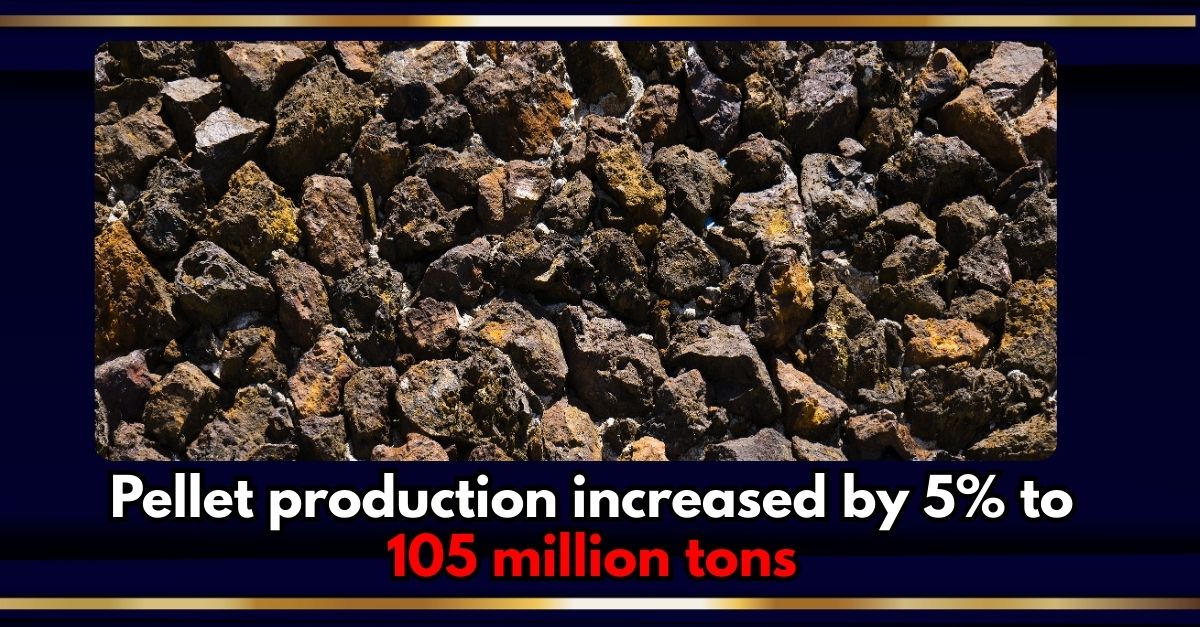India–US Trade Tensions Rise Over Steel and Auto Tariffs NMDC Limited reports a 38% drop in Q4 FY24 consolidated net profit RINL to Raise $23 Million Through Land Sales Amid Crisis

Pellet production up 5% to 105 MT in FY2024–25.
Higher steel output and pellet use boosted demand.
Exports fell 40%, raising oversupply concerns.
India's iron ore pellet production reached a record 105 million tons in the fiscal year 2024–25, marking a 5% year-on-year increase. This growth was driven by stable steel production, increased utilization of pellets in blast furnaces, and expansion of domestic capacity.
The country's total design capacity for pellets rose to 164 million tons per year, up from 148 million tons in the previous fiscal year. Odisha maintained its leadership with a production volume of 37 million tons, reflecting a 3% year-on-year increase. West Bengal experienced notable growth of nearly 30% year-on-year, driven by the inauguration of new plants, including the Bengal Energy (BEL) facility with a capacity of 1.2 million tons annually.
Among producers, JSW Steel emerged as the top producer with output reaching 27 million tons, an 8% rise from the previous year. In contrast, AM/NS India saw a 14% decline in production due to a significant drop in pellet exports, which fell by over 55% year-on-year. Tata Steel increased its production by 16% year-on-year, benefiting from a new production line at Kalinganagar.
The increase in pellet production was largely driven by a 5% rise in steel production, totaling 152 million tons, and greater use of pellets in blast furnace metallurgy, where their share rose from 25% to over 50%. Pellets also played a crucial role in sponge iron production, accounting for 63% of the volume.
Despite this growth, the market faced challenges with a 40% year-on-year decline in pellet exports, leading to concerns about oversupply, given the current capacity utilization rate of 64%.
Looking ahead to FY2025–26, further growth in pellet production is anticipated, although much will depend on foreign market demand and advancements in energy-efficient technologies within the steel industry.
Also Read : India’s $3.83 Billion Tariff Plan Targets U.S. Steel and Aluminum: What to Know Success of India grounded in pursuit of reforms over last years: IMF MD Kristalina Georgieva